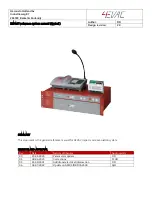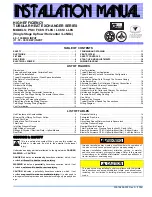
ENGLISH • 12
Section 8: Techniques for Use cont'd
• The recommended normal procedure is to clean 2-3 teeth
with the air polishing spray (foot control depressed to the
second position) and then rinse the area with water only (foot
control depressed to the first position) to inspect the work site
before proceeding to the next 2-3 teeth. If desired, the bleed air
(foot control released) passing through the air polishing insert tip
can be used to dry the work site during inspection.
• Flushing the patient's tongue with water only (foot control
depressed to the first position) helps reduce the saline taste)
• Maintain a 3 to 4mm insert tip-to-tooth operating distance.
• The patient's lip should be held between the thumb and index
finger of your free hand and pulled out and up, or down, to
form a "cup". Do not retract the lips.
• Tilt the patient's head toward you to help prevent puddling in
the cupped lip and minimize aerosol dispersion.
• Use a saliva ejector or HVE.
• In the posterior regions, use the cheek to help contain aerosol
spray.
8.7 Performing Air Polishing procedures without JetShield™
8.8 Proper Angulation of the Air Polishing Insert without JetShield™
Recommended angulation on the
anterior teeth is 60° with the tip aimed
at the middle third of the tooth surface.
Recommended angulation
to occlusal surfaces is 90°.
Recommended angulation on the buccal and
lingual surfaces of posterior teeth is 80° with
the tip aimed slightly distally.
• When air polishing the facial surfaces of the anteriors, center the
spray on the middle third of the tooth and use a constant
circular motion. The edge of the spray will clean the teeth to the
gingiva.
• Do not aim directly at the soft tissue.
• Avoid prolonged use on polished metal surfaces as a matte finish
may result.
• In the upper anterior region, use the upper lip and your hand as
a shield to help contain the aerosol spray.



































